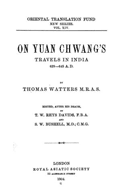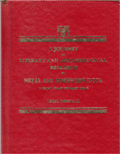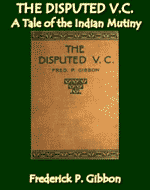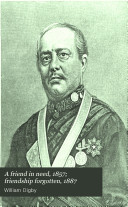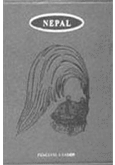
Perceval Landon, Nepal Vol. I & II (New Delhi: Rupa & Co, 2007) (Originally published in 1928)
Father Giuseppe de Rovato’s “An Account of the Kingdom of Nepal” was the first article written by any European on King Prithvi Narayan Shah – the founder of modern Nepal. It was written in 1786. The article was translated and published in English by Sir John Shore. It was published in the second volume of the Asiatic Researches (Calcutta) in 1790. It dealt with the consolidation of power by King Prithvi Narayan within the Kathmandu Valley between 1767-77.
A number of books were written on Nepal and its rulers after this publication. Perceval Landon’s book Nepal has come into existence after almost 138 years. Landon (1868-1927) was an English writer. He was also a journalist, now best remembered for his classic and much reprinted Ghost Story “Thurnley Abbey.” But for the people of Nepal, Landon is remembered for his two volume work on Nepal with several illustrations and maps.
Vol I of Landon treats the inward and outward politics of Nepal from the time it grew into a national entity. Many of the history that he has dealt with till the advent of Jung Bahadur and his visit to England is dealt by others as well. He examines Nepal in the political, religious and historical context vis-a-vis the reality of the twentieth century. In Landon’s point of view, this country is full of antiquities and relics of the past – is unique because it has never suffered the repercussions of the Christian or the Moslem expansion. This is a great complement of course. But the second volume goes beyond.
In second volume, Perceval Landon has remarkably explained Prime Minister Chandra Shamsher and his efforts in nation building. There are details about his early life, his personality, the Lhasa Mission of 1904, his visit to England, and his role in concluding the Treaty of 1923 with British India following the World War I. Landon has applauded Chandra’s judicial and social reforms and his commitment for the Nepalese Army, public works, roads and bridges, and land reform. “The work of the Prime Minister in gradually introducing reforms into Nepal has been hard indeed; but it has been carried out with resolution, steadiness and tact.” Here, Landon also concentrates on the people and politics of the land. The towns, rulers, races and architecture of Nepal also find space here. He also examines the role of Buddhism in Nepal. According to the author, “Buddhism and Hinduism have carried on relations partly of hostility and partly of sympathy which are almost unparalleled in the history of comparative religion.” This is his distinctive finding.
Landon has dealt with races of Nepal as well. He describes the Newars are as the most important of the quasi-aboriginal races in the country. At first sight, Landon writes, “it would seem certain that Thakuris and Khas are in fact due to an emigration from India caused by the ravages of Mohammedan conquerors. It is only right, however, to notice that the existence in Nepal of a pure Hindu race called Khas is mentioned in ancient chronicles as early as the Year AD 1000.” It is possible that the Gurungs and Magars came to Nepal during one or more of the historical Mongolian migrations to the west in search of food, peace, and what is called nowadays a place in the sun. Landon finds that the Magars, another important community of Nepal, originally occupied the Tarai and lower mountain districts near Butwal and Palpa. In the east of Nepal by far the most important group is that of the Kirantis. As to the Limbus, Landon says they are among the oldest recorded populations of the country and their features indicate that they are descendants of early Tibetan settlers in Nepal. Of other tribes, he also mentions Sunwars and Murmis. There is a brief note that respect for caste regulations is everywhere on the increase rather than the decline in Nepal.
The Appendices in Volume I and II are no less significant. Volume I includes armorial bearings and flags, regalia, anthems and titles, role of succession to hereditary prime ministership of Nepal, the law of royal descent, decorations, weights and measures, census returns, the arsenal museum, pillar inscriptions in Nepal, and some of the more important books and articles on Nepal (in order of date). Appendices in Volume II include notes on Buddhism in Nepal, Nepalese races, the records of the invasion of Nepal by the Chinese in 1792, and Treaty of Peace between Nepal and Tibet in 1856. Landon has given an interesting list of Europeans who visited Nepal during 1881-1925. It shows that in the course of forty-four years about 153 persons visited Nepal. Out of this, 55 Europeans were the guests of the Prime Minister. This figure excluded British diplomatic corpse based in Kathmandu.
Hinting on the relationship between England and Nepal, Landon notes: “There was no treaty obligation, no contract, not even an understanding between the two peoples, but the Gurkhas came down in their thousands to stand once more beside the Indians [read British] in a day of trial. Nothing could better express the relations between Nepal and India [read Britain] than the answer of a high authority in Simla to me when I asked what the policy of the Indian [read British] government towards Nepal was. ‘We have no policy. We have only friendship.’ It is a great phrase, and it deserves to be remembered in Whitehall as well as in Simla and Kathmandu.”
“[T]he great days of Nepal are before her, not behind her. I have no wish to celebrate the international significance of this keen and united state of mountain soldiers, wholly independent of Indian [read British] political life; free from the disintegrating and troublesome rivalries of India [read Britain] upon which she looks down from her hill fastnesses; in a military sense more highly trained than any other race in Asia; rich with traditions gilded by great and recent glory; and dowered also with an ambition which knows few limits.”
The book also focuses on the Chinese invasion of Nepal and the tussle between the two regarding Tibet. The keynote of the book, however, is the emphasis of Perceval Landon on the absorbing patriotism of the Nepalese rulers to secure their beautiful kingdom from foreign threat whatsoever.


